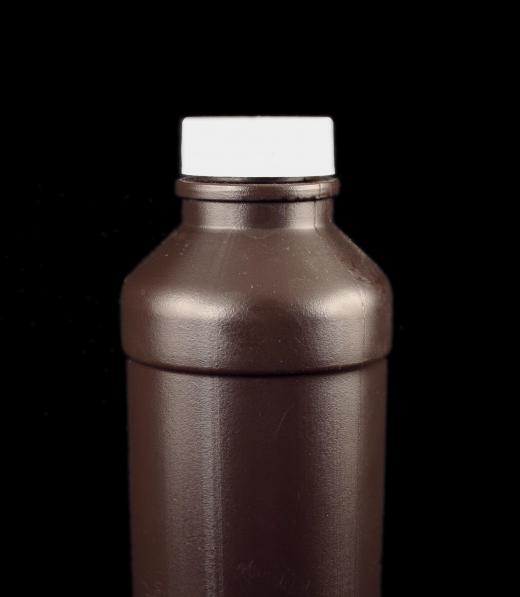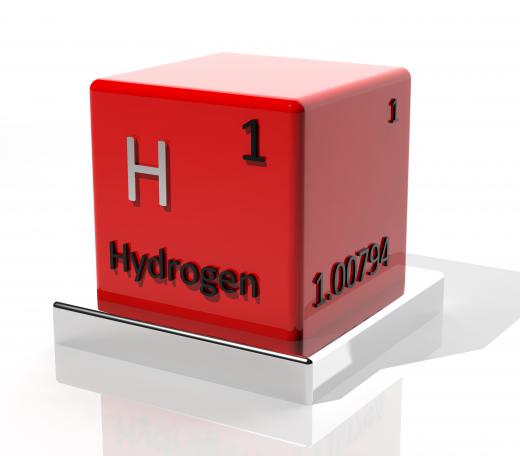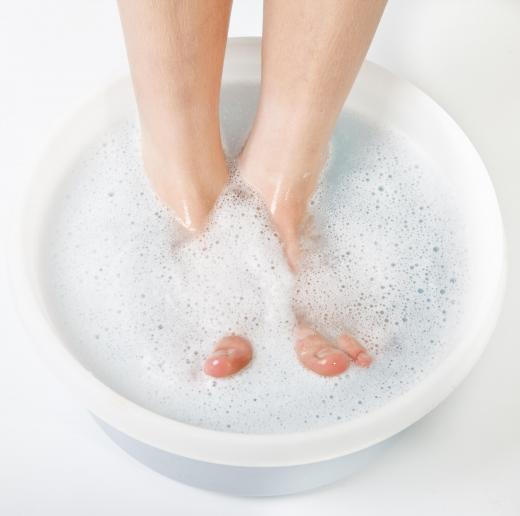What Are the Different Hydrogen Peroxide Concentrations?
Hydrogen peroxide (H2O2) differs from water (H2O) by the presence of an additional single atom of oxygen. Since the additional oxygen atom is "electron-loving," or electrophilic, hydrogen peroxide is a very powerful oxidizing agent. The added oxygen also makes hydrogen peroxide quite unstable, unless it is quite pure. Hydrogen peroxide is usually dissolved in water because of the danger of burns and contamination-induced instability associated with the pure form, and it is used at an appropriate dilution for the task at hand. There are a number of different hydrogen peroxide concentrations of commercial importance.
Hydrogen peroxide has an abundance of uses calling for a number of concentration levels, including uses as mouthwash, for soaking the feet, for cleaning fish aquariums and for the treatment of acne. It is also used in cleaning carpets, in polishing metals and to whiten paper products. Moreover, it is used in the laboratory, in sanitizing swimming pools and in wastewater treatment facilities. Included among the different hydrogen peroxide concentrations used are very high concentrations used for rocket fuel. In this regard, peroxide is used not only in rockets intended for outer space, but also for devices such as rocket belts for "inner space" that utilize a concentration of 90%.

Hydrogen peroxide dissolved in water is less of a safety issue. This becomes especially important at high concentrations, at which point catalytic peroxide decomposition can result in the formation of not only oxygen, but of dangerous steam. A much lower concentration of hydrogen peroxide is called for when used as mouth gargle, wound disinfectant or hair lightener. Such uses call for the lowest of the commercially different hydrogen peroxide concentrations — 3%. Even when that concentration is purchased, most dentists recommend a 50:50 dilution, bringing peroxide strength down to approximately 1.5%.

Slightly higher human-use peroxide concentrations may be available in some locations — 6% is readily available, for instance, in the UK. In the laboratory, the most commonly seen of the different hydrogen peroxide concentrations is 30%. Another commercially available grade is 35% — the so-called "food grade." The Food and Drug Administration (FDA), a US government agency, has decried the use of this product and recommends consumers not purchase 35% hydrogen peroxide for human use. Stronger concentrations for use as fuel can run as high as 98%.

The different hydrogen peroxide concentrations can all be produced in the same manner. Formerly, peroxide was produced by the electrolysis of sulfuric acid or some other, similar, sulfate material. In 2011, the anthraquinone process — a catalytic oxidation-hydrogenation process — is utilized.
AS FEATURED ON:
AS FEATURED ON:

















Discussion Comments
Another use for hydrogen peroxide is to treat bacterial vaginosis (bacterial infection of the vagina - very different from yeast).
It has actually been shown to be effective even *without* antibiotic treatment and even in cases that did not respond to the first round of treatment.
Better still, because it helps balance the pH of the vagina, it encourages the regrowth of "good" bacteria. Keeping things healthy down there is a delicate balance. Treating for yeast can encourage BV and treating for BV can encourage yeast! If you've been diagnosed, you might want to ask your doctor about this treatment.
The study I saw used the three percent concentration of hydrogen peroxide.
Post your comments